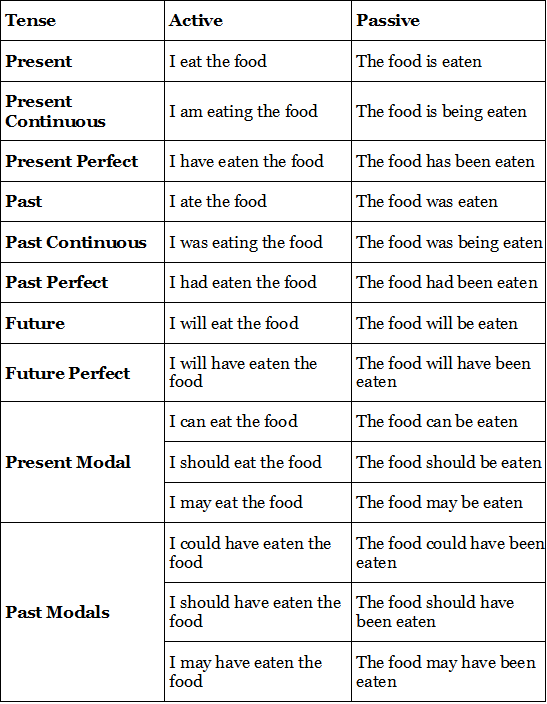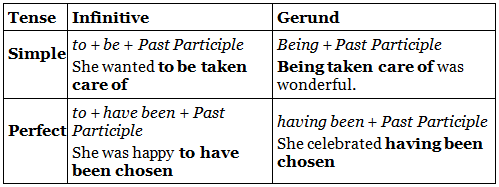Notes: Passive Voice | Basic Grammar for IELTS PDF Download
| Table of contents |

|
| Importance of Passive Voice in IELTS |

|
| What are the Active and Passive? |

|
| What are the Passive Voice Rules? |

|
| Gerunds and Infinitives |

|
| When do we use the passive voice for IELTS? |

|
Importance of Passive Voice in IELTS
Passive voice is a crucial aspect of grammar for the IELTS exam. Whether you are speaking, writing, or trying to comprehend reading passages, having a good command of grammar, including passive voice, is essential.
In the Academic IELTS Task 1, when you encounter a process diagram, the use of passive voice becomes particularly important. Throughout your explanation of the process, you will need to use passive voice to accurately describe the steps involved.
What are the Active and Passive?
When we use the active voice, the subject is doing the action of the verb:
When we use the passive voice, the person or thing receiving the action becomes the subject:

What are the Passive Voice Rules?
To make a sentence passive, we do three things:
- Move the object of the sentence, and make it the subject. The object thus becomes the subject (often we exclude the object because it is not important to the sentence).
- Add in "by" before the new object (if you are including it in the new sentence)
- Add the verb "to be" to the front of the verb, and change the verb to the past participle. You then have a passive voice verb. Remember to keep the tense the same.

In this case the verb "bit" is in the past simple, so when it is made passive, the verb "to be" must be the past simple - "was".
These are examples of how we form it with different tenses (without the object in the passive):

Gerunds and Infinitives
We can also use the passive voice for infinitive and gerund structures:

Transitive and Intransitive Verbs
However, you cannot use the passive with intransitive verbs.
Transitive verbs have to take an object. For example, you cannot say "He discovered". This is a transitive verb so it needs an object: " He discovered a cure".
So this can be made passive: "A cure was discovered".
Intransitive verbs are not followed by an object. For example, you can say "He died". Or it could be followed by an adverb: "He died yesterday".
But we cannot say: "He was died" or "Yesterday was died he".
When do we use it?
It is much more common to use the active than the passive, so you should only use it if there is a specific reason. Below are are the reasons that we use it.
Remember that this is usually a matter of choice for you, depending on the context in which you are writing.
1. When you think the receiver of the action is more important than the doer of the action

2. When you think it is obvious who the doer is so it does not need to be mentioned

3. When the doer of the action is unknown or we don't want the doer to be known

4. When you think the doer is irrelevant.

5. When you are writing for certain genres, such as science reports or for academic journals

When do we use the passive voice for IELTS?
As it is just a part of general grammar, you may use it at any point in speaking or writing.
The time when you will really be in trouble if you don't know how to use it is if you have to write about a man-made process in Task 1 of Academic IELTS (for natural processes you use active voice).
Here is an example of a man-made process diagram, where you have to describe the process of making chocolate:

When we describe a process such as this, we are not interested in who does the activity, the "doer", we are interested in the activity itself.
So in order to emphasize this, the activities are used as the subjects.
|
18 videos|54 docs
|
FAQs on Notes: Passive Voice - Basic Grammar for IELTS
| 1. What is passive voice and how is it formed? |  |
| 2. When should passive voice be used in writing? |  |
| 3. What are the differences between active and passive voice? |  |
| 4. Can all sentences be converted to passive voice? |  |
| 5. How can excessive use of passive voice affect writing? |  |




















